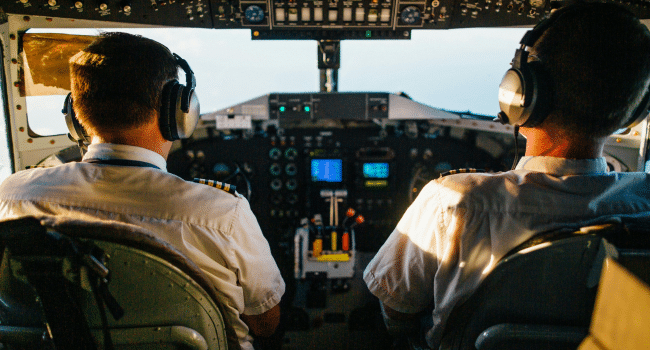Table of Contents
In the highly regulated aerospace industry, ensuring that aviation parts are authentic and meet Federal Aviation Administration (FAA) standards is not just a matter of compliance—it’s a matter of safety, reliability, and operational integrity. The FAA has established a comprehensive framework of requirements to govern the manufacturing, distribution, installation, and maintenance of aviation parts, particularly those classified as critical to flight safety.
Why Authentic Aviation Parts Matter
Aviation parts play a crucial role in ensuring the safety and performance of aircraft. Counterfeit or non-compliant components can lead to severe consequences, from costly repairs to catastrophic failure. That’s why aviation authorities and airlines take FAA compliance seriously when sourcing and verifying parts.
The aviation industry relies heavily on traceability, quality control, and documentation. Authentic parts not only comply with regulatory mandates but also offer peace of mind to airlines, maintenance crews, and ultimately, passengers.
Key FAA Regulations and Certifications
FAA regulations are designed to cover the lifecycle of an aviation part—from design and production to installation and repair. Here are some of the essential certifications and rules to be aware of:
1. Parts Manufacturer Approval (PMA)
PMA is a combined design and production approval for replacement and modification parts. It confirms that a part complies with FAA design standards and is safe for use in certified aircraft.
2. Technical Standard Order Authorization (TSOA)
TSOA is granted to manufacturers that produce parts under a Technical Standard Order (TSO), which is a minimum performance standard defined by the FAA. TSOA parts must meet rigorous testing and documentation requirements.
3. Airworthiness Directives (ADs)
ADs are legally enforceable rules issued by the FAA to address unsafe conditions in aircraft and aircraft components. Compliance with ADs is mandatory, and failure to do so can ground an aircraft.
4. Form 8130-3, Authorized Release Certificate
This form certifies that a part is airworthy and conforms to its approved design. It is especially important when transferring parts between suppliers, MROs (Maintenance, Repair, and Overhaul facilities), and operators.
Common Pitfalls in Aviation Part Sourcing
Navigating FAA regulations can be complex. Many operators face challenges such as:
- Incomplete or missing traceability documentation
- Parts sourced from unapproved vendors
- Failure to check FAA ADs and service bulletins
- Misunderstanding PMA vs. OEM part equivalency
These pitfalls not only jeopardize compliance but can also result in delays, fines, or even grounding of aircraft.
Using an Aerospace Parts Verification Checklist
To simplify the validation process, many organizations are now using an aerospace parts verification checklist to confirm authenticity before accepting or installing a part. This checklist typically includes:
- Verification of FAA certification (PMA, TSOA, etc.)
- Inspection of Form 8130-3 and related documentation
- Confirmation of manufacturer and distributor credentials
- Review of serial numbers and batch data against known FAA databases
Implementing such a checklist can significantly reduce risk and streamline audits.
Leveraging Trusted Resources and Industry Guidance
In addition to FAA documentation, operators should consult industry associations like the Aviation Suppliers Association (ASA) and Aeronautical Repair Station Association (ARSA). These organizations provide updates on regulatory changes, compliance tools, and quality standards.
The FAA also offers a searchable database for Airworthiness Directives and a guidance library for certifications, found on the FAA official website. Staying informed of regulatory updates and leveraging these resources helps operators maintain compliance and operational continuity.
The Role of MROs and Distributors in Compliance
Maintenance and repair organizations (MROs) and parts distributors act as critical checkpoints in the aviation supply chain. Their role includes:
- Verifying documentation and authenticity of parts before installation
- Ensuring traceability from manufacturer to end-user
- Retaining and organizing compliance records for inspections
Partnering with FAA-certified MROs and vetted distributors minimizes the chances of non-compliant parts entering an aircraft system.
The Growing Threat of Counterfeit Parts
The FAA and the aviation industry at large have raised concerns over counterfeit and unapproved parts. These parts often mimic genuine components but lack proper certification, testing, or documentation. With the increase in global supply chains, identifying and avoiding counterfeit parts has become more complex.
Steps to counter this threat include:
- Sourcing parts only from FAA-approved or OEM-authorized vendors
- Conducting periodic audits of inventory and suppliers
- Using serialization and digital traceability tools
Conclusion: Stay Vigilant, Stay Compliant
In aviation, safety is paramount. Ensuring that all components are FAA-approved and verifiably authentic is not a one-time task—it’s an ongoing responsibility. Adopting best practices such as using an aerospace parts verification checklist and regularly consulting FAA and industry resources will help you maintain the highest standards of compliance and safety.
Ultimately, understanding FAA requirements isn’t just about checking boxes. It’s about protecting lives, maintaining reputation, and supporting the integrity of one of the most advanced and regulated industries in the world.
